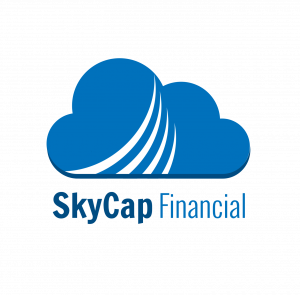As a way of easing the financial strife that the COVID-19 pandemic has caused, the Canadian Government implemented the Canada Emergency Response Benefit (CERB). The CERB was established as financial support to help qualified Canadian residents. This helped maintain some sense of financial stability while a large portion of the country was being locked down.
More About the CERB
Sudden unemployment or loss of their unemployment insurance left many with nowhere to turn for financial help. Lenders don’t often provide access to loans and their credit cards tend to max out. Realizing the pandemic lockdown would hurt citizens and the economy, the Canadian Government acted quickly by introducing the CERB legislation.
Under the terms of the CERB, Canadians could get $2,000 a month in relief benefits. CERB was put in place for seven periods. 4 weeks each at $500 a week, starting on March 15, 2020, and expired on September 26, 2020. Those in need had to apply for each 4-week period separately.
CERB Expiration Deadline has Passed
As stated above, access to these much-needed benefits technically expired on September 26, 2020. If you would have qualified as a recipient, you will be happy to learn that the CRA has extended the deadline for retroactive applications. More on that below.
Treating CERB Monies as Taxable Ordinary Income
While the program is technically no longer available, there is still one crucial issue of which you need to be concerned. The benefits count as ordinary income and not loans. This means that you will now need to pay income tax on all CERB monies you received in 2020.
The income tax you are going to owe will be calculated at your normal tax rate. The good news is you won’t need to pay these taxes until the April tax filing date in 2021. Clearly, paying taxes is far better than having to repay loans.
When the tax deadline rolls around next year, there are a couple of things you need to focus on related to these benefits.
First, you need to get busy applying for retroactive benefits (deadline information below) if you believe you are eligible. You need to do that now so you include the retroactive benefits when it comes time to prepare your tax return and pay the taxes owed.
Second, you need to do something about any erroneous double payments that you might have received. You do have an obligation to returns those monies immediately. If you neglect to return erroneous double payments before the end of the year, you will owe taxes on that income. After making your income tax payment, you will still need to return the monies to avoid more serious consequences. Just think of the double payments as temporary taxfree loans from the government.
One more thing you need to consider. Audits will be done on the CERB program. Receiving any benefits despite not being eligible, will also result in payments to the CRA. To avoid more taxes and further consequences, you need to step forward and do that immediately.
Key Deadlines and Procedures
As referenced above, you still have time to apply for retroactive benefits. If you feel you are due payments you have not yet received, there are two key dates that you need to circle on your calendar.
The first date is Dec. 2, 2020. That’s the last day the CRA has said it will accept and process retroactive payment applications. You have two options for submitting your application for periods 5 through 7. You can go through your CRA MyAccount online, or you can call the automated toll-free phone line at 1-800-959-2019 or 1-800-959-2041.
If you want to apply for retroactive benefits related to periods 1 through 4, you will need to speak directly with an agency representative by calling 1-800-232-1966. There is a good chance they will need some kind of documentation.
The second date of concern is Dec. 31, 2020. That’s the last day you can fess up and return any monies you were not eligible to receive. Again, you need to do this in order to avoid having to pay taxes and suffering further legal and financial consequences. If for any reason you are not sure if you owe monies back to the government, there is an online tool available to help you determine whether or not you need to return any CERB money.
What to do at Tax Time
After year-end, you should be receiving a T4 for any monies you received from the Canada Revenue Agency during the year. When you receive your T4, it’s incumbent on you to verify the amount on the form. That’s the amount on which you are going to need to pay taxes.
You can prepare and submit your income tax return any time after the end of the year as long as it reaches the CRA by April 30, 2021. As you should be aware, this is a hard due date that cannot be extended except under certain circumstances.
If you believe you will need a loan or loans to make your payment, you might want to apply for said loans well in advance of the due date. Hopefully, you were able to set some money aside.
Introducing the Canada Recovery Benefit (CRB)
With Canadian residents still suffering financial issues related to the COVID-19 virus, the Canadian government followed up by introducing the Canada Recovery Benefit (CRB).
The CRB is very similar to the CERB with a couple of exceptions. First, the CRB’s benefits are distributed in 2-week periods at $1,000 a period. The benefit amount is effectively the same, but it gets paid more frequently.
The other exception is the CRB gets taxed before distribution. This means, recipients actually get $900 per payment with the other $100 (10% income tax rate) being applied. If you receive any CRB payments, you might have to pay more in taxes than the $100 paid on your behalf. That determination will be based on your applicable tax rate, which comes from the total income received during the year.







